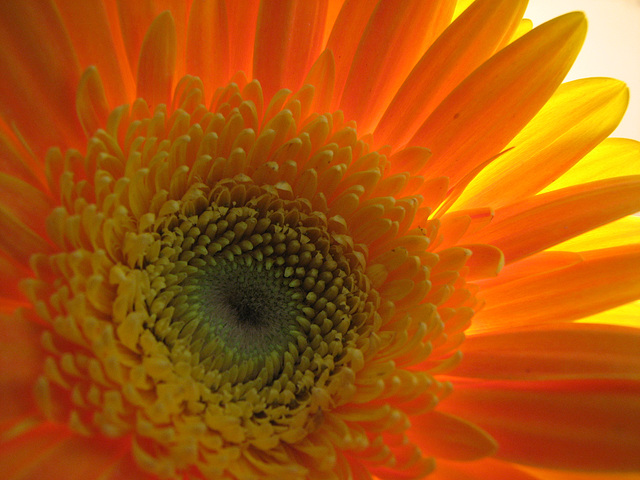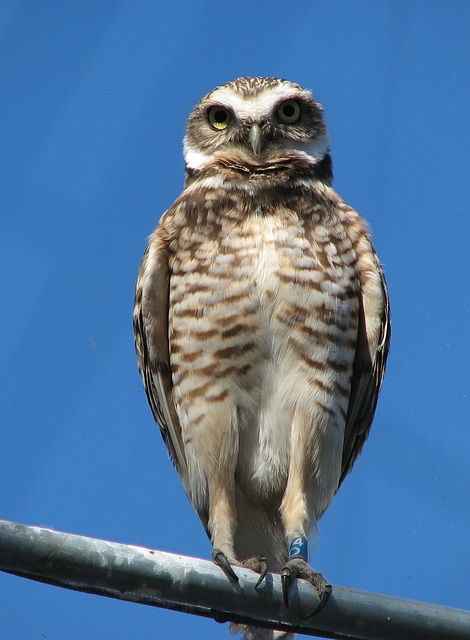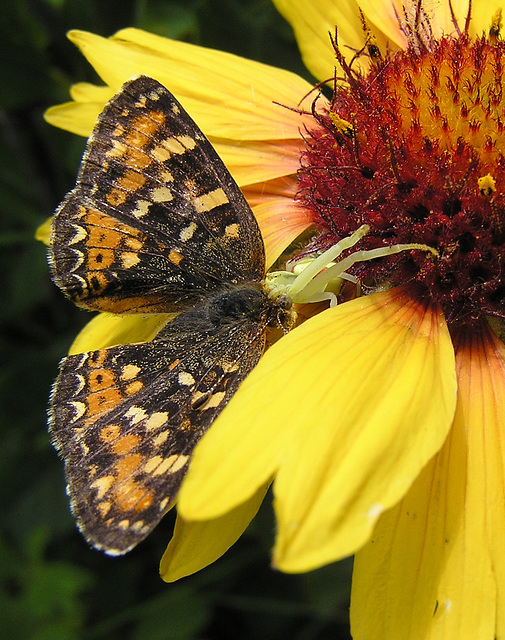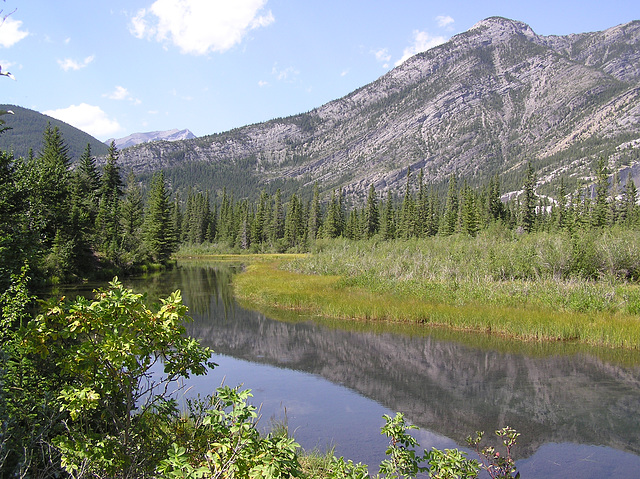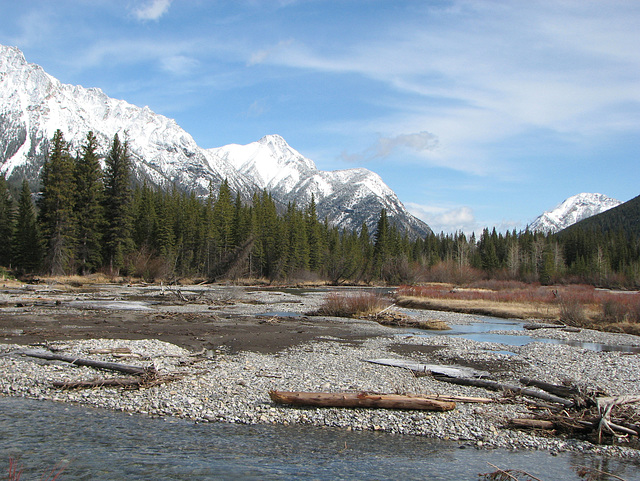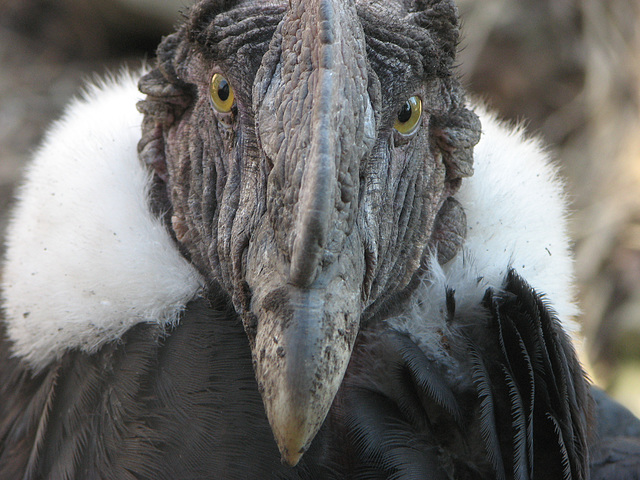
Explore, Flickr
09 Mar 2007
Orange 4
A final three photos taken of the bunch of vivid orange Gerbera Daisies that I bought recently.
13 Mar 2007
Magnificence
What a beautiful five and a half hours I spent this afternoon at the Calgary Zoo! My day started off at 9:15 a.m. with a birding walk at Inglwood Bird Sanctuary. It had snowed overnight and was snowing heavily for my long drive. Weather was awful, roads were awful, traffic was awful! Our walk was in a winter wonderland, but my photos don't even begin to do it justice! Around noon, I went straight from the Bird Sanctuary to the nearby Zoo and the weather changed to blue sky and sunshine. Headed straight to see the Snowy Owl family - mum, dad, and three of last year's youngsters. This is, of course, dad! I hope no one leaves a comment beneath this photo before I have a chance to say that it was taken in captivity!! I'm typing away frantically here. Yeah, I have a whole pile of photos with COLOUR/COLOR in them, so stay tuned, LOL!
13 Mar 2007
My little buddy
This little Burrowing Owl at the Calgary Zoo screeched loudly every time I walked past him/her. There are several of them loose in the Conservatory at the Zoo - fun to watch. Happy Feathery Friday, everyone!
25 Jun 2005
Another one bites the dust
Took this almost two years ago south of the city, at a place called William's Coulee. I first caught sight of the beautiful butterfly and was surprised that it didn't fly away as I slowly approached. When I got close, I saw the reason. It was this Crab Spider's lunch!
20 Mar 2007
Close encounter
My usual little White-breasted Nuthatch (male). Happy Feathery Friday, everyone!
06 Aug 2005
Bow Valley Provincial Park
A view taken at the Bow Valley Provincial Park in Alberta, right at the start of the mountains. An amazing area of wetlands and river as far as wildife and plants are concerned. You can find several different kinds of orchids here.
25 Mar 2007
Mt. Lorette area 4
These six photos show where I spent part of the day today! Not actually on these ski slopes, known as Nakiska, but in the area at the foot of Mt. Allan. Twice a year, Golden Eagles migrate over this area and the trip today was to see if we could see any of these amazing birds flying over. They appear only as tiny black specks to the naked eye. Actually, I think I was too focussed on the scenery and didn't see any Eagles, other than a Bald Eagle.
26 Mar 2007
Winner of the staring contest
This is Lorenzo, a male Andean Condor, one of a pair brought to the Calgary Zoo about two weeks ago. Males have browny/yellow eyes, and females have red eyes.
"The Andean Condor, Argentinean Condor, Bolivian Condor, Chilean Condor, Colombian Condor, Ecuadorian Condor or Peruvian Condor (Vultur gryphus), is a species of bird in one of the vulture families. It is in many regards the largest flying land bird in the Western Hemisphere and is the heaviest, but not the lengthiest, member of the order Ciconiiformes.
This condor inhabits the Andes mountains. Although it is primarily a scavenger, feeding on carrion, this species belongs to the New World vulture family Cathartidae, related to storks and not closely related to Old World vultures, which are in the family Accipitridae along with hawks, eagles and kites.
The adult plumage is of a uniform black, with the exception of a frill of white feathers nearly surrounding the base of the neck and, especially in the male, large patches or bands of white on the wings which do not appear until the completion of the first moulting. As an adaptation for hygiene, the head and neck have few feathers, exposing the skin to the sterilizing effects of dehydration and ultraviolet light at high altitudes, and are meticulously kept clean by the bird. The head is much flattened above. In the male it is crowned with a caruncle or comb, while the skin of the neck in the male lies in folds, forming a wattle. The skin of the head and neck is capable of flushing noticeably in response to emotional state, which serves to communicate between individuals.
The female, contrary to the usual rule among birds of prey, is smaller than the male.
Wild condors inhabit large territories, often traveling 250 km (150 miles) a day in search of carrion. They prefer large carcasses such as deer or cattle which they spot by looking for other scavengers, who cannot rip through the tougher hides of these larger animals with the efficiency of the larger condor. In the wild they are intermittent eaters, often going for a few days without eating, then gorging themselves on several pounds at once, sometimes to the point of being unable to lift off the ground." Taken from Wikipedia.
Jump to top
RSS feed- Latest items - Subscribe to the latest items added to this album
- ipernity © 2007-2024
- Help & Contact
|
Club news
|
About ipernity
|
History |
ipernity Club & Prices |
Guide of good conduct
Donate | Group guidelines | Privacy policy | Terms of use | Statutes | In memoria -
Facebook
Twitter

